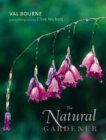A single minded approach to gardening design is essential if one is to create a distinctive garden with character. Although it is quite normal for gardens to develop over time in a rather piecemeal (or organic) fashion, the gardener should always work to a main theme.
Sometimes garden continuity is decided by the prevailing conditions. For example, sandy soils are predisposed to growing xerophytes, with dessert or Mediterranean gardening; while rock gardens are usually well-applied to steep gradients. But many ordinary garden sites have no distinctive features and in this environment gardening design skills take over and a theme is imposed on the garden. Enter the typical landscape gardener who unifies the garden style by using a standard ‘off the peg’ solution.
Organic gardeners know better. So imagine a small garden worked by a big gardener - by that I mean a gardener who loves every plant that grows. How can that gardener choose plants so as to mould a theme for the garden. I will answer this by outlining the plan for my small organic style garden --- X --- . You can do a similar exercise for your garden using different priorities.
My organic style
This is how I describe the garden I am creating over a level site on loamy soil.
- diverse in plant life, maximizes the number of species and the space given to growing
- encourages a diverse population of wildlife such as insects, birds, mammals etc…
- is interesting all year around. I distinguish between
garden colour and an interesting garden
on this link
- includes plant fragrance with fragrant leaves, flowers, and night scented flowers
- provides a bounty of edible plants over a long period
^ Top of page
- grows herbs for health, fragrance, and taste
- the layout, colour, and texture accentuates the apparent awareness of spaciousness
- the garden theme reminds me of my favourite places - the North Wales mountains, rivers and lakes. The most esoteric priority, but a garden should be a place in which you feel at home
- is fairly easy to maintain but worth extra effort for a pleasing result
- contains some interesting and unusual plants, including ferns, mosses, liverworts and fungi
- the plants grown are identified as named species, varieties or cultivars
- excludes those exotic plants that take lots of time and effort to grow, are attractive for only a short period, and have low wildlife value.
These are my priorities, and they will determine the plants that I choose to grow. My funds are limited and I’m always tempted to buy plants when I see them. But now I insist that new plants meet my gardening design specification.
^ Top of page
Your garden may have a different specification. You may restrict your plants to those that thrive in the particular conditions of your garden. You may be a plant collector favouring particular species. You may restrict all your garden space to wild herbs. These decisions are influenced by your gardening design specification and priorities.
The history of a garden is a big factor in gardening design. Rather than erasing everything that went before and starting completely afresh it is best to make use of existing features wherever possible. My father started with a fresh site. As many gardener did then he planted the whole lot with potatoes. Then starting near the house he developed an area of flowers, a lawn, a straight concrete path and 2 straight boundary hedges of Beech and Privet. 26 years later half the garden furthest from the house still grew in allotment style with soft fruit, vegetables and a greenhouse.
Although this basic pattern will not change I am going to blur the edges. I have given up plans to grow separate herb gardens, or areas for fruit, and areas for flowers. Instead with garden diversity a priority, I am extending the flowers to grow between my vegetables, and the some vegetables will be growing with my flowers too. The apple bushes that grew near the house have been replaced by lawn. Now I plan to grow apples cordons in the bottom half.
^ Top of page
The most difficult features to build in are the straight paths and hedges which both confine and truncate the natural organic shapes I want in my gardening design. Remember the shortest distance between 2 points is a straight line so these can make the garden look smaller. More on this soon.
I will not be building a full sized water feature. Unless my gardening design is to be centred around water and their characteristic plants there would not be enough room. Ponds also require quite some effort. Instead I will create a small very shallow pool for wildlife with one end gently slope from a peaty bog for water cress.
To be continued ...
BOOKS ABOUT THE GARDENING DESIGN
